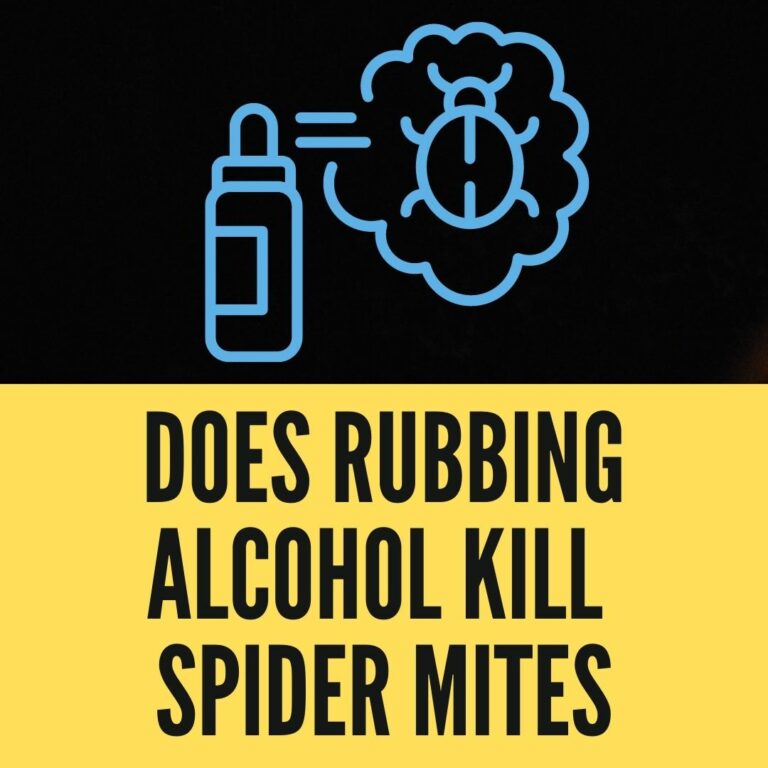When it comes to pest management in gardens, particularly concerning spider mites, one may wonder about the efficacy of common household items. Among these, rubbing alcohol emerges as a potential solution. But can it really kill mites? Understanding the nuances involved in this relationship between rubbing alcohol and spider mites is essential for gardeners and plant enthusiasts alike. Let’s delve into the science and practicality of using this ubiquitous substance in pest control.
The Mechanics of Mite Infestation
Spider mites, tiny arachnids that thrive in warm and dry conditions, can wreak havoc on various plants. Their presence is often marked by yellowing leaves, webbing, and general decline in plant vitality. The challenge lies not only in eliminating these pests but also in doing so without harming the plants themselves. The understanding of their biology is crucial; spider mites reproduce rapidly, making it imperative to act swiftly upon discovering an infestation.
But what makes rubbing alcohol a contender in this battle against spider mites? The answer lies in its composition. Rubbing alcohol typically contains isopropyl alcohol, a solvent known for its ability to penetrate cell walls and disrupt cellular functions. This property might just be the key to understand how it could combat these pesky invaders.
How Rubbing Alcohol Works
When applied to plants infested with spider mites, rubbing alcohol operates through a fascinating biochemical mechanism. The alcohol works by dehydrating the mites, effectively causing a breakdown of their protective exoskeleton. Upon contact, the potent nature of isopropyl alcohol quickly denatures proteins and disrupts cell membranes, resulting in cellular collapse for these minuscule pests.
However, the effectiveness of rubbing alcohol is contingent on proper usage. To harness its full potential, a diluted solution is often recommended—typically around 70% isopropyl alcohol mixed with water. This dilution not only enhances the alcohol’s efficacy but also mitigates potential harm to the plant tissues. It’s worth noting that when using rubbing alcohol as a pesticide, timing and method of application play a critical role. For optimal results, it’s advisable to spray in the early morning or late afternoon when plants are at their most hydrated, thus minimizing stress.
The Application Process: Steps to Take
For those ready to engage in battle with spider mites, a systematic application process can greatly improve outcomes. Start by preparing a spray solution: mix equal parts of water and 70% isopropyl alcohol in a clean spray bottle. Give it a gentle shake to ensure the mixture is consistent.
Prior to spraying, conduct a patch test on a small, inconspicuous area of the plant to determine any adverse reactions. Some plants have sensitive foliage that could suffer from the alcohol’s potency, leading to leaf burn. If the plant shows no negative effects after 24 hours, proceed with the overall treatment.
When applying the solution, ensure that you coat both the upper and lower surfaces of the leaves, where spider mites tend to congregate. A fine misting is ideal—avoid drenching the plants, which might lead to other issues such as mold growth or root rot. Regular follow-ups and reapplications every few days may be necessary until the infestation is under control.
Considerations and Limitations
Furthermore, not every plant is a suitable candidate for treatment with rubbing alcohol. Sensitive species such as ferns or certain tropical plants may not react well to alcohol, necessitating alternative pest management strategies. In some cases, integration of various control methods, such as introducing natural predators or using insecticidal soaps, may yield better results.
A Holistic Approach to Pest Management
Ultimately, curiosity and experimentation in the garden can lead to heightened understanding and better pest management outcomes. Armed with knowledge about the potential of rubbing alcohol against spider mites, one can take informed steps to protect their cherished greenery, transforming what could be a devastating infestation into a manageable issue.





Leave a Comment